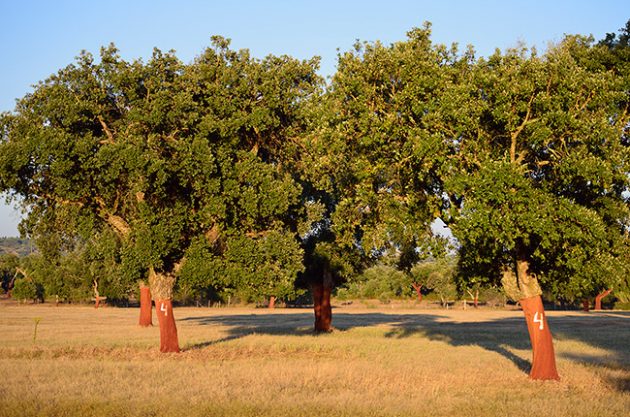Promotional Feature, sponsored by Apcor
What is the impact of cork on the environment...?Promotional Feature, sponsored by Apcor.
Environmental benefits of cork
If you’ve been lucky enough to encounter a cork oak forest, then you must concur that they are a particularly spectacular sight; even more so if it’s during harvest time – between May and August – when the highly skilled, dedicated workers move their way through the rows of trees, judiciously shedding the trunks of their prized bark.

It’s very much a labour of love, as it takes one quarter of a century before a tree delivers its first harvest, with the second harvest coming around one decade later.
However, the resulting cork from these two harvests doesn’t cut the mustard when it comes to the quality required for wine stoppers; these are taken from the third harvest, when the tree can be 43 years old, although the patience is arguably worth it, as the tree can often then go on for another 200 years.
Simple aesthetics are not the only benefit that these woods bring to the table. Well over 100,000 people around the world are directly or indirectly reliant on cork forests and natural cork is still the seal of choice for 70% of the world’s wine producers.
More immediately, they supply economic and social benefits to the surrounding population through employment, keep at bay desertification and therefore the destructive effects of water run-off and soil erosion, while at the same time providing an invaluable habitat for endangered, local wildlife.

In addition to all these boons, and on a far more grander scale, they also make a significant contribution to our planet.
Of course, the ability of trees to provide oxygen via photosynthesis is common knowledge, however cork oak trees can point to another, very meaningful string to their bow which, thanks to their particular cell structure, is the capacity to soak up climate-warming carbon.
The cork trees in Portugal alone retain over four million tonnes of carbon dioxide every year, plus natural cork is also a far more eco-friendly option when it comes to its production compared to other choices – what with the manufacturing of plastic closures being responsible for the release of ten times more CO2, while aluminium versions cause almost 30 times the release of CO2 than cork.
Yet another attractive character trait is that with cork production any waste arising from the making of the original cork stopper is used for an array of alternative purposes, including wall or floor panels, shoes, household accessories, insulation, and car seats, and even helping in providing electricity to factories; plus thanks to a raft of recycling initiatives in countries around the world, even the original cork you use at home can be shredded and ploughed back into similar schemes.
Also, finally, let’s not forget that cork is 100% natural, totally recyclable, decomposes naturally, comes from a sustainable source without cutting one single tree – and arguably looks prettier and certainly sounds better when you eventually crack open one of your prized bottles.
Apcor is the Portuguese cork association that represents, promotes, divulges and carries out research in the Portuguese cork industry. It was created in 1956 and is based in Santa Maria de Lamas, in the council of Santa Maria da Feira, at the heart of the cork industry, around 30 kilometres from Porto.







